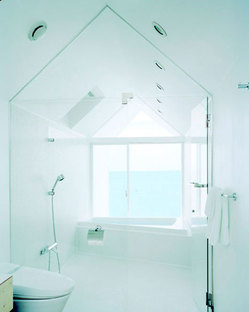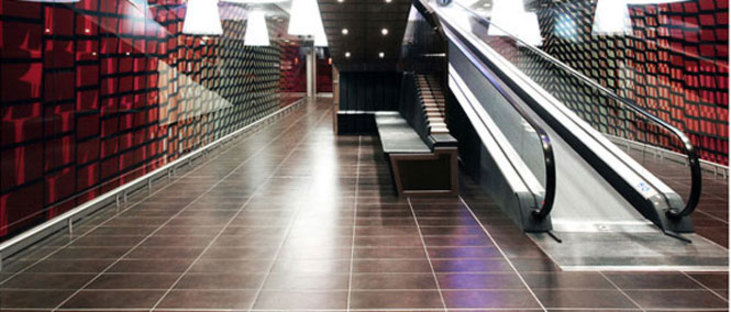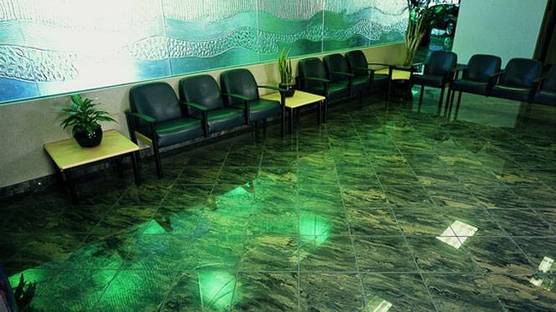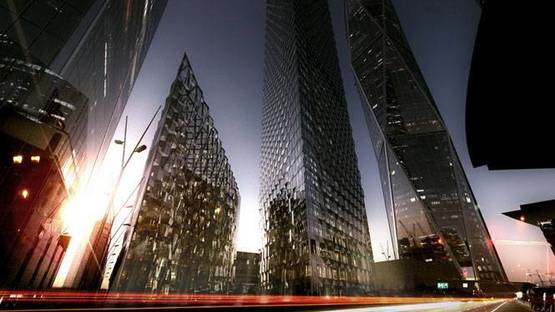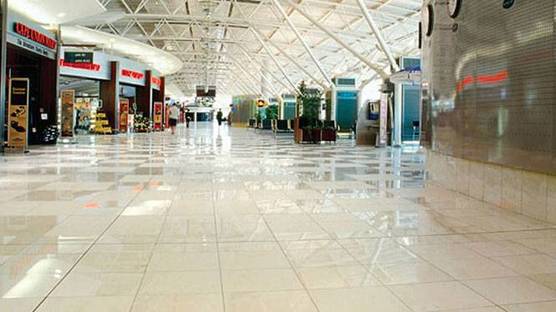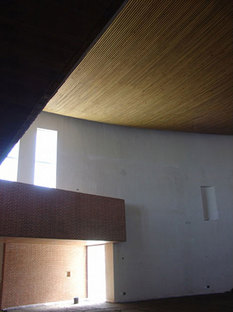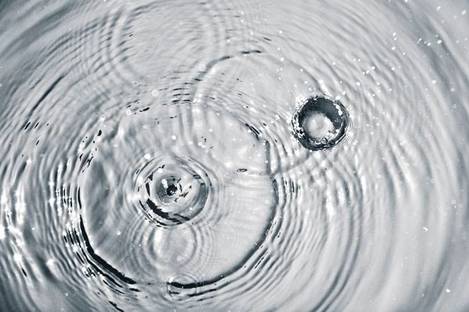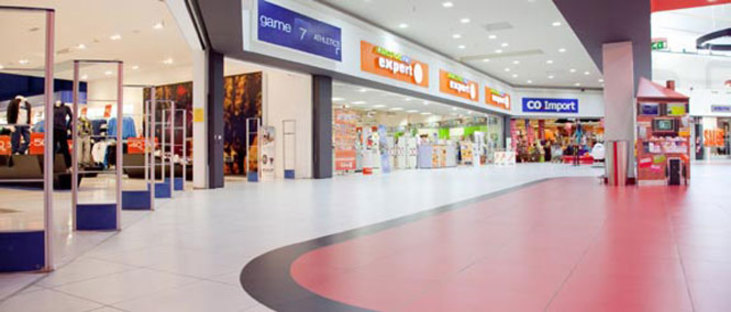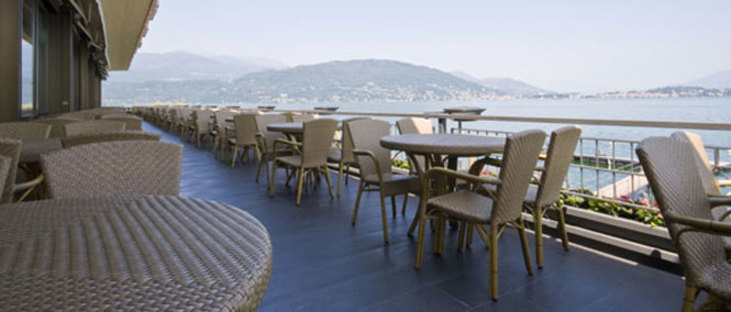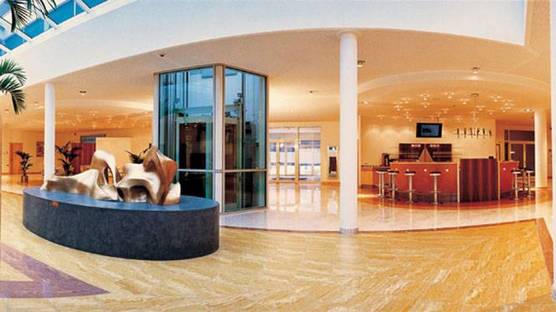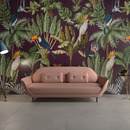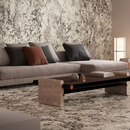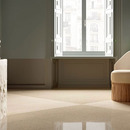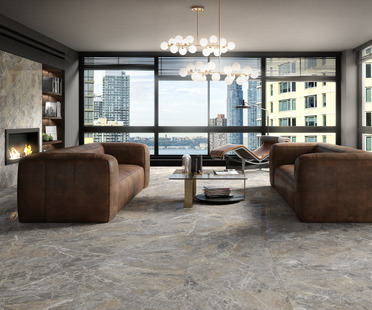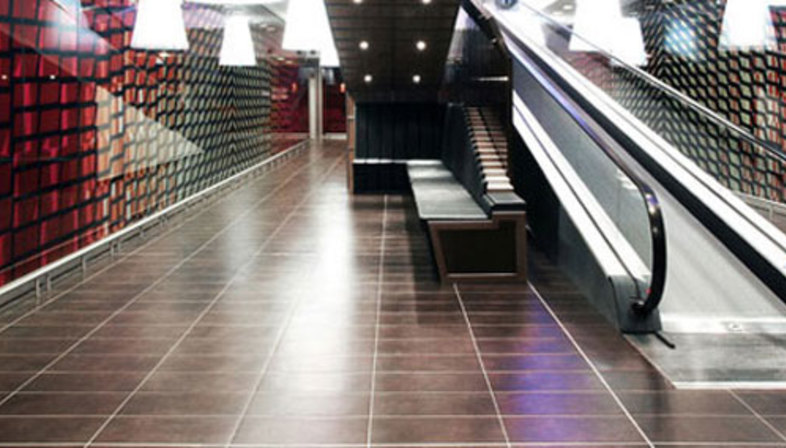










Shopping centres and showrooms, public buildings with their adjacent offices, sidewalks and stairways are all constantly subject to great stress and wear from pedestrian traffic and atmospheric agents.
Attracting visitors’ eyes to these surface to invite them into the showroom requires a particular quality of design in porcelain floor tiles and wall tiles.
This is why it is so important for ceramic tiles to guarantee durability, efficiency and easy cleaning in the long term, while also being capable of conveying a welcoming feel and underlining all the qualities of the interiors in which they are installed.
These properties may be obtained through use of the effect of refraction of light on the surfaces to add to the prestige of a building and its interior.
Light is a basic, tangible, modular component of all major architectural projects, and it has always determined the vitality and appeal of the construction: elements of decisive importance in enhancing the design of any place, particularly high traffic locations.
In production of FMG’s porcelain floor tiles and high-tech ceramic marble tiles these characteristics are given concrete form, for tiles are polished using a technique capable of obtaining, through the modulation of light on their surfaces, a gloss and an expressiveness which amplify all the veins and hues typical of the surface of the original stone.
The sense of aggregation and perception of an open space can thus be achieved using different sizes of tiles, including maxi tiles. Their installation with minimal gaps ensures visual continuity favouring all possible light effects and reflections, making the building a space in which to find new aesthetic qualities and high-tech comfort.
Marco Privato
Images:
01_Nowhere But Sajima, visitors’ residence in Sajima-cho,Yokosuka, Japan. Client: Nowhere Resort. Design: Yasutaka Yoshimura. Photo credits: © Yasutaka Yoshimura, Chiaki Yasukawa, Chiyoe Sugita
02_Liz Gallery, Liz Gallery shopping centre, Montesarchio (BN), Italy. Design: Cherubino Gambardella. Flooring: travertine and Paranà Brown by FMG.
03_Moss Bros. Ford, Colton, California, USA. Flooring: Blue Barracuda granite by FMG.
04_The Blade, Seoul, South Korea. Design: Dominique Perrault. Photo credits: © DPA/Adagp, © Luxigon/DPA/Adagp
05_Cape Town International Departures Terminal, South Africa. Design: Target Project. Flooring: Delicato Cremo marble by FMG.
06_San José parish centre, El Casar, Spain. Design: EXIT architects. Photo credits: Courtesy of EXIT architects
07_Light and refraction on water. Photograph by Massimo Fabris, 2012
08_ Ipercoop ESP, Ravenna, Italy. Design: arch. Germana Caselli. Flooring: Bianco Statuario and Luxus Black marble.
09_Grand Hotel Dino, Baveno, Verbano Cusio Ossola, Italy. Flooring: FMG: Statuario Venato and Rosa Portogallo marble; Persiano Giallo travertine; Kashmir White and Blue Barracuda granite.
10_Ktw Software & Consulting Gmbh, Kirchbichl, Austria. Design: arch. Dipl. Klaus Ebner. Flooring: FMG: Statuario Venato, Azul Boquira and Rosa Portogallo marble; Persiano Giallo and Persiano Rosso travertine.










